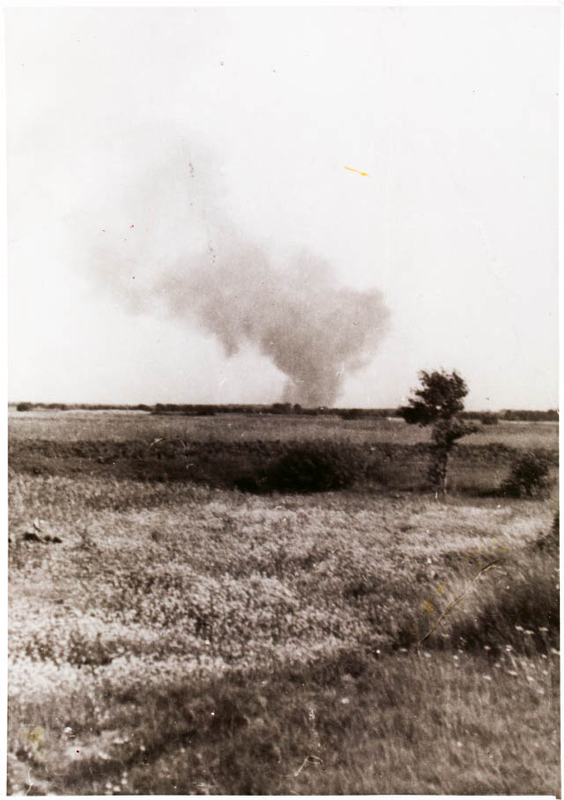This is a look at some claims made about him and what documents exist that support or question the credibility of those claims.
Station Master of Treblinka?
Part of the hagiography of Zabecki is that he was the "Station Master" at Treblinka.
However, his ID card from October 1, 1943 states he was a "dispatcher" (fahrdienstlieter). Maybe he was made station master after the Soviet Union recaptured the area, as it's said he was station master until 1949.
From his ID, he was not "station master" during the war.
Ostbahn ID Card Inconsistencies
Zabecki's Ostbahn ID card is dissimilar to every other card.
Spoiler

2. The stamp says something at the top, which I can't decipher. Almost all other cards say "Ostbahn" at the top. One that I found, issued in Warsaw, said "GeneralGouvernement." Zabecki's is unique in this regard that is has something completely different.
3. The card has an issued date of October 1, 1943, two months after newspapers reported the Treblinka uprising took place.
Dozens of Ostbahn IDs are available online and his is very different, even taking into account his is a scan in a 1977 book and most online are photographs.
Mouthpiece for Soviets
It seems that Zabecki was willing to say whatever the Soviets put into his mouth.
He supposedly counted the numbers of victims sent to Treblinka in each train car. In 1944, he counted "at least 3 million" under Soviet investigation.
In 1945, he counted 1.2 million for the Polish investigative committee.
In addition, he was possibly the origin of the This is Spinal Tap joke about a person dying by choking on someone else's vomit.
His entire testimony is full of bizarre stuff like this, along with some claims that support the conventional narrative and some material inconsistent.The Germans and guards who guarded the prisoners were always drunk. I know that they forced people to eat vomit, i.e., what they vomited on the ground while drunk, forcing the prisoners to lick the vomit off the ground with their tongues.
He also echoes the claim that the trains to Treblinka each had 60 cars. The 120-axle Soviet trains had 60 cars, as a rule, but not the 90-axle German trains, which had fewer. This issue is a bit tangential but we seem to have more Soviet influence on his ability to count.
If he was a dispatcher at Treblinka during the war, it's likely the Soviets would have suspected him of being a collaborator. The stated NKVD policy was to imprison collaborators and gather atrocity accounts.
Treblinka Revolt Witness
This is all Zabecki had to say in 1944: "The mass influx of transports of people ceased after the prisoner uprising that took place at the death camp on August 2, 1943."
In 1945, he expanded: "On 2 August 1943, the death camp was on fire between 3 p.m. and 6 p.m. During that time, two shifts of Ukrainians from the camp were bathing in the Bug. All Jews escaped from the camp, carrying weapons from the arsenal they had broken into."
Again, the only ID card associated with him was issued on October 1, 1943. He is mostly parroting what was already published a year earlier by Wiernik and "anonymous" versions of Wiernik.
Other accounts of the uprising claim fewer than "all Jews escaped" from the camp.
Treblinka on Fire Photo
This is a famous photo of the Treblinka camp on fire after the August 2, 1943 uprising.
Spoiler

Sources Still to Find
Stalag II-A records. Zabecki's prisoner number is 22264.
Ostbahn employment record pre-dating October 1, 1943. Otherwise, it can't even be confirmed he was working at the Treblinka station before then.
Original verion of Obóz straceń w Treblince. This version should have copies of documents turned over by Zabecki. The version online in Biuletyn Głównej Komisji Badania Zbrodni Niemieckich w Polsce doesn't have these documents.
Zabecki's memoir Wspomnienia dawne i nowe.
Sources Used
Spoiler
- DeathCamps.Org. “The Treblinka Station Master Franciszek Zabecki.” December 28, 2005. http://www.deathcamps.org/treblinka/zabecki.html.
- Holocaust Education & Archive Research Team. “Franciszek Zabecki – The Station Master at Treblinka: Eyewitness to the Revolt – 2 August 1943.” Accessed September 30, 2025. http://www.holocaustresearchproject.org ... becki.html.
- Samuel, Monika. “Railwayman Franciszek Ząbecki. Memoirs of a Witness from Treblinka.” In Treblinka Warns and Reminds. Museum Treblinka, 2022. Originally published as Kolejarz Franciszek Ząbecki. Prace wspomnieniowe świadka z Treblinki. https://www.prchiz.pl/storage/app/media ... pomina.pdf.
- Wikipedia, wolna encyklopedia. “Franciszek Ząbecki.” Accessed September 29, 2025. https://pl.wikipedia.org/w/index.php?ti ... d=72696889.
- Zabecki, Franciszek. Memories old and new. PAX, 1977. Originally published as Wspomnienia dawne i nowe. Library of Congress. https://search.catalog.loc.gov/instance ... y=78352038.
- Zabecki, Franciszek. “Treblinka – Extermination Camp.” December 21, 1945. Chronicles of Terror. https://chroniclesofterror.pl/dlibra/pu ... dition/310.
- Zycie Siedleckie. “He Was a Humble Man.” December 12, 2013. Originally published as Był Skromnym Człowiekiem. https://web.archive.org/web/20131219001 ... zlowiekiem.
- ИнфоРост, Н. П. “Minutes of the interrogation of Franciszek Zabecki, the duty station Treblinka in 1941-1944. Treblinka Station, September 24, 1944.” September 24, 1944. Originally published as Протокол допроса Францишка Зомбецкого, дежурного станции Треблинка в 1941-1944 гг. Станция Треблинка, 24 сентября 1944 г. History Russia. https://docs.historyrussia.org/ru/nodes/354481.
